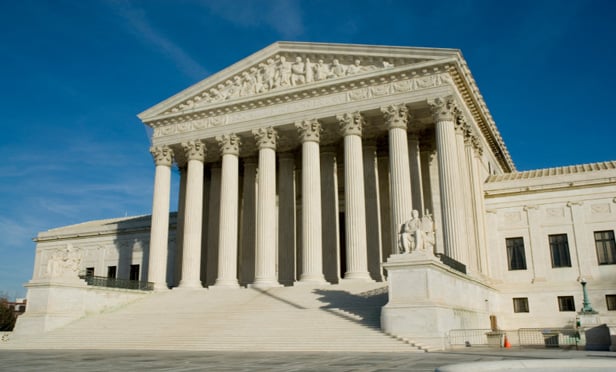Features

Local Law Banning Music Festival Is Not Unconstitutional Restraint of Speech
A landowner challenged local zoning that banned holding a three-day music festival, arguing that the law was an unconstitutional violation of free speech and void for vagueness.
Features

Legal Perspective On Major League Baseball Scandal
Two Major League Baseball in-house lawyers, both former prosecutors, led the investigation into the Houston Astros cheating scandal.
Features

Second Circuit Upholds Title 18 Insider-Trading Conviction Where Title 15 Elements Not Established
Will Prosecutors Take Advantage? The recent decision in United States v. Blaszczak may signal a change in how prosecutors in the Second Circuit, and perhaps in other jurisdictions, pursue insider-trading cases.
Columns & Departments

Real Property Law
Mechanic's Lien Not Invalid on Its Face Temporary Flooding Not a De Facto Taking
Features

Tips to Minimize Landlord's Exposure When a Commercial Tenant Files Bankruptcy
Because bankruptcy can add significant expenses and increase the time it takes to remove a delinquent tenant, landlords should not allow tenants to fall far behind on rental payments. Here are some tips on how to address the issues raised by a bankrupt tenant.
Features

Bankruptcy Court Denies Motion for Fee Enhancement Under 'Common Fund Doctrine'
The U.S. Bankruptcy Court for the Western District of Virginia recently denied creditors' counsel's motion for a fee enhancement under the "common fund doctrine," finding it could not award the requested fees absent statutory authority.
Features

U.S. Supreme Court Reaffirms the American Rule In De Novo Challenges to the PTO
In 2013, the PTO adopted a new policy under which any party commencing a de novo proceeding challenging a PTO decision would be responsible to pay a pro rata share of the salaries of the government attorneys working on the matter. On Dec. 11, 2019, the U.S. Supreme Court rejected the PTO's new interpretation of the Patent Act and held that the American Rule, a centuries-old principle under which each party bears its own attorneys' fees, does apply to this statute.
Features

The Trademark That Got His Goat
In a recent trademark cancellation case that has drawn "human interest" attention in the news, the plaintiff appealed an adverse decision to the Federal Circuit. The plaintiff was not "kidding" when he expressed his opinion that the registered mark, described as "goats on a roof of grass," is demeaning to goats which, in turn, is offensive to him.
Columns & Departments

Co-ops and Condominiums
Business Judgment Rule Protects Parking Fee Determination
Features

Examining the Interplay Between Exculpation Clause and Fiduciary Duty
In the case of In re Solutions Liquidation, the U.S. Bankruptcy Court for the District of Delaware adjudicated a motion to dismiss filed by the debtors' former managers and officers in connection with the breach of fiduciary duty complaint filed against them by the trustee of the debtors' liquidating trust.
Need Help?
- Prefer an IP authenticated environment? Request a transition or call 800-756-8993.
- Need other assistance? email Customer Service or call 1-877-256-2472.
MOST POPULAR STORIES
- The 'Sophisticated Insured' DefenseA majority of courts consider the <i>contra proferentem</i> doctrine to be a pillar of insurance law. The doctrine requires ambiguous terms in an insurance policy to be construed against the insurer and in favor of coverage for the insured. A prominent rationale behind the doctrine is that insurance policies are usually standard-form contracts drafted entirely by insurers.Read More ›
- A Lawyer's System for Active ReadingActive reading comprises many daily tasks lawyers engage in, including highlighting, annotating, note taking, comparing and searching texts. It demands more than flipping or turning pages.Read More ›
- The Brave New World of Cybersecurity Due Diligence in Mergers and Acquisitions: Pitfalls and OpportunitiesLike poorly-behaved school children, new technologies and intellectual property (IP) are increasingly disrupting the M&A establishment. Cybersecurity has become the latest disruptive newcomer to the M&A party.Read More ›
- Abandoned and Unused Cables: A Hidden Liability Under the 2002 National Electric CodeIn an effort to minimize the release of toxic gasses from cables in the event of fire, the 2002 version of the National Electric Code ("NEC"), promulgated by the National Fire Protection Association, sets forth new guidelines requiring that abandoned cables must be removed from buildings unless they are located in metal raceways or tagged "For Future Use." While the NEC is not, in itself, binding law, most jurisdictions in the United States adopt the NEC by reference in their state or local building and fire codes. Thus, noncompliance with the recent NEC guidelines will likely mean that a building is in violation of a building or fire code. If so, the building owner may also be in breach of agreements with tenants and lenders and may be jeopardizing its fire insurance coverage. Even in jurisdictions where the 2002 NEC has not been adopted, it may be argued that the guidelines represent the standard of reasonable care and could result in tort liability for the landlord if toxic gasses from abandoned cables are emitted in a fire. With these potential liabilities in mind, this article discusses: 1) how to address the abandoned wires and cables currently located within the risers, ceilings and other areas of properties, and 2) additional considerations in the placement and removal of telecommunications cables going forward.Read More ›
- Guidance on Distributions As 'Disbursements' and U.S. Trustee FeesIn a recent case from the Bankruptcy Court for the District of Delaware, In re Paragon Offshore PLC, the bankruptcy court provided guidance on whether a post-plan effective date litigation trust's distributions constituted disbursements subject to the U.S. Trustee fee "tax."Read More ›
